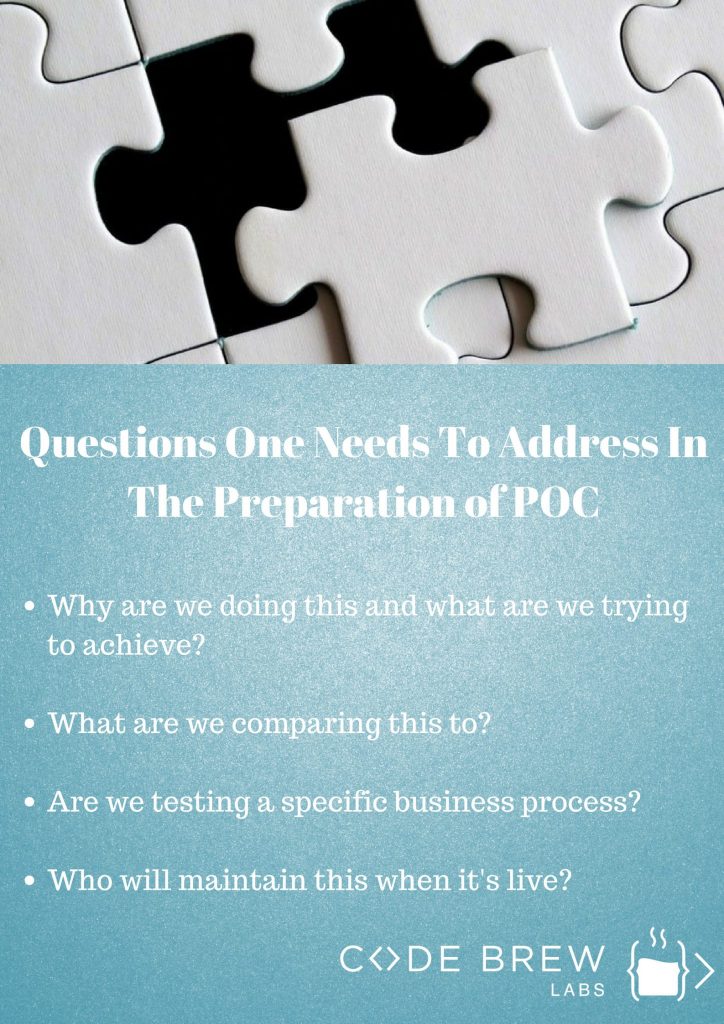Oftentimes, the challenges and complexities involved in creating a product only become apparent once actual the development gets underway. As well as being undesirable, such situations can knock the confidence out of the development team and leave them hopeless of getting anywhere close to a fully fledged product. Sounds familiar? Then you’d definitely want to learn about the Proof of Concept.
Proof of concept is a trial product that’s developed and then analyzed internally, without showcasing anything to the general public. The purpose of POC is to put things into perspective, ascertain a product’s true potential and get a feel for the risks that one will have to contend with. All that while keeping the resource utilization to the bare minimum. In the software world, you can try any number of POC variations.
A typical example of POC in website development is usually a single page, bare-bones website built with the most easily available and least exhaustive features. Many tests are performed on it and if everything turns out well in the end, the POC is trashed and the website development begins to take shape from the get-go.
Despite the very obvious benefits of a Proof of concept, many entrepreneurs remain sceptical about it. Their claim that involving the resources in the making of POC is a total waste of time. However, that’s a very parochial view of things. With the help of a POC, even a slightly new and fresh perspective thrown into the mix can reshape the whole business mindset. Let’s take a look at some of the key benefits of a POC:
Risk Negation:
Even the most basic type of POC helps uncover valuable information with regards to business’ overall concept, design, usability and functionality. It’s also helpful to the service architects before they undertake the MVP development. POC in such cases works like the first version of a project’s future roadmap. In that sense, Proof of Concept really is a powerful tool in the hands of an entrepreneur because as well informing about the viability and attractiveness of a project, it helps them understand the possible cost a product/service would necessitate.
Power To Convince Investors:
For entrepreneurs, without the necessary funding, a proof of concept can be just the most effective means to convince the investors. Investors always like to see a business’ vision, if possible in some workable form. POC does just that; it sends a clear message that the business is sure of its goal, what it needs to achieve and it’s really much more convincing than a bland powerpoint presentation that’s not going to get many investors excited.
Get Your Hands Dirty:
Working on a proof of concept is completely different from creating prototype sketches on a sheet of paper. For starters, you feel like you’ve actually made some progress in terms of practical implementation. Next, the cost projections and other complexities really start to hit home in a more tangible manner. So, a POC even with limited expense of resources should go a long way in giving you a true reality check and ascertaining your limits.

If you’re thinking of building a mobile/web applications, it’s highly recommended that you take the assistance of a User Experience Designers right from the beginning. Even a handful of mockups work effectively to serve as a POC. What’s crucial however is that you can reuse them when the project reaches the ‘open to public’ stage. A POC won’t completely eliminate all the technical difficulties that undergo a fully-fledged project, but it allows you to run tests on, for example, a small target group of customers.
Final Thoughts:
In the end, it can be safely concluded that the benefits of POC far outweigh its bare minimum cost and effort. During the project development, for some businesses, it’s the exploration of new opportunities that holds more significance, while for others the understanding of the technical difficulties. A POC helps them achieve both, therefore it should be a no-brainer to start every project with a POC.






